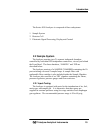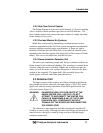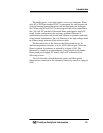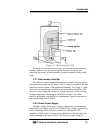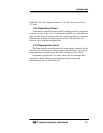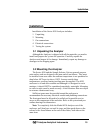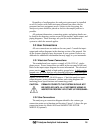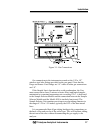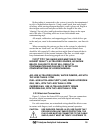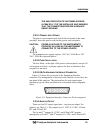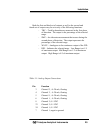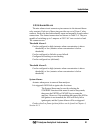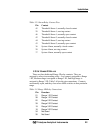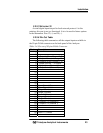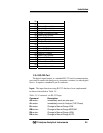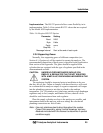
Installation
Teledyne Analytical Instruments 18
Before tubing is connected to the system, it must be decontaminated
to rid it of hydrocarbon deposits. Using a small torch, heat each length
of tubing, while passing nitrogen through it, until it glows red. Begin at
the nitrogen source end and proceed down the length of the tube,
“chasing” the red glow (and hydrocarbon deposits) down to the open
end of the tube. Cap tubing while not in use with suitable non-
contaminating caps.
All sample, calibration, and supporting gas lines, which deliver gas
to the analyzer, must be decontaminated before connection; vent lines do
not.
When connecting the various gas lines to the system, be absolutely
certain that no “dead ends” are left; that is, no unused branch lines
should be left capped off, where pockets might form of material that is
not representative of the current contents of the line, or which might
keep contaminants from being purged out of the system.
CAUTION: THE GASES USED MUST BE OF THE
HIGHEST QUALITY, ULTRA ZERO GRADES, AS SHOWN
BELOW. FAILURE TO DO SO WILL RESULT IN
CONTAMINATION AND FAILURE TO DETECT LOW
CONCENTRATIONS OF HYDROCARBONS.-
AIR: USE ULTRA ZERO GRADE, WATER PUMPED, AIR WITH
THC LESS THAN 0.1 PPM.
FUEL: USE ULTRA HIGH PURITY (UHP) GRADE HYDROGEN
GAS, 100%, WITH THC LESS THAN 0.5 PPM.
CARRIER GAS: USE ULTRA HIGH PURITY GRADE
NITROGEN GAS, WITH THC LESS THAN 0.1 PPM.
3.3.3 Electrical Connections
Figure 3-1 shows the Series 4030 rear panel. There are connections
for power, digital communications, and both digital and analog
concentration output.
For safe connections, no uninsulated wiring should be able to come
in contact with fingers, tools or clothing during normal operation.
CAUTION: USE SHIELDED CABLES. ALSO, USE PLUGS THAT
PROVIDE EXCELLENT EMI/RFI PROTECTION. THE
PLUG CASE MUST BE CONNECTED TO THE CABLE
SHIELD, AND IT MUST BE TIGHTLY FASTENED TO



